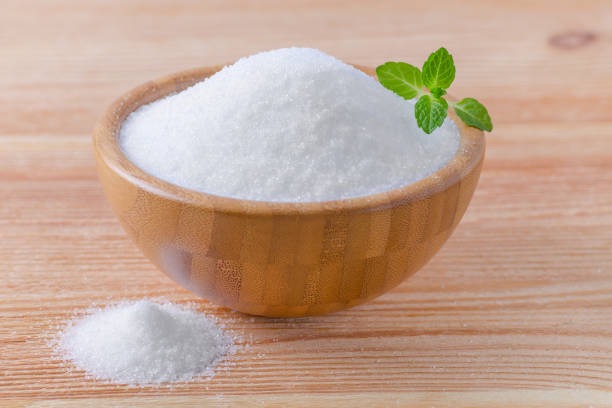Views: 222 Author: Sara Publish Time: 2025-11-21 Origin: Site








Content Menu
● Sweetness Intensity and Caloric Content
● Health Implications: Sugar vs. Sweeteners
● Functional and Industrial Uses
● Compatibility with Processing
● Psychological and Metabolic Effects
● FAQ
>> 1. What types of sweeteners exist?
>> 2. Are sweeteners safer than sugar?
>> 3. Can sweeteners completely replace sugar in recipes?
>> 4. How much sweeter are artificial sweeteners?
>> 5. What are the benefits of sugar alcohols?
Sweeteners and sugars are often mentioned together, but they are not identical. Each plays a distinct role in food, beverage, and healthcare industries, especially with rising consumer demand for healthier alternatives. This article delves into what makes sweeteners different from sugar, the types available, their sweetening power, health impacts, industrial applications, and answers common questions to help clarify these important ingredients.

Sugar generally refers to simple carbohydrates like sucrose, glucose, and fructose. Table sugar, primarily sucrose, is extracted from sugarcane or sugar beets. These sugars naturally occur in fruits and vegetables but are also added to many foods. Sugar provides about 16 calories per teaspoon and acts as a carbohydrate energy source by raising blood glucose levels. It contributes not only sweetness, but bulk, texture, and fermentation properties in cooking and processing.
Sweeteners include a broader range of substances designed to provide sweetness. They fall into three main categories:
- Natural Sweeteners: Derived from plants (stevia, monk fruit) or naturally occurring polyols (erythritol, xylitol), often with lower calories and a minimal blood sugar effect.
- Artificial Sweeteners: Man-made compounds like aspartame, sucralose, and saccharin, offering intense sweetness at near-zero calories. These are hundreds of times sweeter than sugar.
- Sugar Alcohols (Polyols): Functional sweeteners like sorbitol and maltitol, with fewer calories than sugar and special properties useful for confectionery or oral health.
Sweeteners can deliver the desired sweet taste with fewer calories and less impact on blood sugar, benefiting diabetic-friendly and reduced-calorie product formulations.
Sweetness intensity varies significantly. Artificial sweeteners can be 200 to 700 times sweeter than sugar, meaning only tiny quantities are needed for the same effect. Natural sweeteners also have a higher sweetness intensity but usually less extreme than artificial ones. Sugar alcohols often provide bulk and sweetness closer to sugar but with fewer calories.
| Type | Calories per Teaspoon | Sweetness Compared to Sugar |
|---|---|---|
| Table Sugar | 16 | 1x (baseline) |
| Aspartame | ~0 | 200x |
| Sucralose | 0 | 600x |
| Stevia | 0 | 200–350x |
| Monk Fruit | 0 | 100–250x |
| Erythritol | 0.2–0.4 | 0.6–0.7x |
Sugar supplies energy but overconsumption leads to obesity, diabetes, and metabolic disorders. Artificial sweeteners offer sweetness without calories but may disrupt gut microbiomes and raise health concerns like metabolic or cancer risks when excessively used. Natural sweeteners such as stevia and monk fruit often present as healthier options due to plant origin and fewer side effects. Yet, moderation remains essential as all sweetening agents may impact taste preference and metabolism when overconsumed.
Sugar serves multiple roles: sweetness, bulk, browning through caramelization, and fermentation in foods. Sweeteners provide tailored functions: clean-label appeal, blood sugar control, calorie reduction, and specific technical roles. Artificial and natural sweeteners enable beverages and foods for diabetics or calorie-conscious consumers. Polyols deliver specialized qualities like cooling sensations and oral health benefits, making them valuable in gums, candies, and healthcare products.
Some sweeteners withstand heat and freezing better than others. For instance, sucralose maintains sweetness after baking, unlike aspartame which degrades. Blending sweeteners can improve taste profiles, reduce off-flavors, and optimize stability. Such blends are crucial in product development for sweet-tasting, health-oriented foods and drinks.

Sugar's sweetness stimulates brain dopamine pathways, providing pleasure but also potential addiction. Artificial sweeteners, being intensely sweet, may overstimulate the brain's reward centers and paradoxically increase sugar cravings. Natural sugars in whole foods release sweetness along with fiber, slowing digestion and limiting spikes in blood sugar and cravings.
Research focuses on improving natural sweetener yields, safety, and cost-effectiveness for large-scale use. Biotechnology is advancing synthetic biology methods to produce rare sweet compounds sustainably. Consumer demand for "clean label," natural, and functional ingredients will continue driving innovation in sweeteners and sugar substitutes.
Sweeteners and sugar, while related through sweetness, differ markedly in origin, composition, caloric content, and health impact. Sugar is a natural carbohydrate source vital for energy but problematic if consumed excessively. Sweeteners encompass natural, artificial, and polyol types designed to reduce calorie intake and manage blood sugar without sacrificing sweetness. Each carries unique functional, metabolic, and sensory attributes critical for product formulation. Using them wisely and understanding their nuances empower manufacturers and consumers to make healthier, tastier choices.

There are natural sweeteners like stevia and monk fruit; artificial sweeteners including sucralose and aspartame; and sugar alcohols such as erythritol and xylitol, each with different sweetness levels and health effects.[2]
Sweeteners can reduce calorie consumption and blood glucose spikes. However, artificial sweeteners may carry risks like gut microbiome disruption or metabolic issues if overused. Natural sweeteners generally have fewer side effects but all should be used in moderation.[1][3]
Sweeteners provide sweetness but might lack sugar's bulk, browning, and fermentation properties necessary in baking and some processed foods. Blends of sweeteners and sugar substitutes are often used to mimic sugar's full functionality.[2]
Artificial sweeteners can be 200 to 700 times sweeter than sugar, so very small amounts suffice to achieve desired sweetness.[9][1]
Sugar alcohols offer fewer calories than sugar, a lower glycemic index, and functional benefits like cooling sensations and dental health support, commonly used in chewing gums and sugar-free candies.[2]
[1](https://health.clevelandclinic.org/whats-worse-sugar-or-artificial-sweetener)
[2](https://pmc.ncbi.nlm.nih.gov/articles/PMC12470175/)
[3](https://healthmatters.nyp.org/is-sugar-better-for-you-than-artificial-sweeteners/)
[4](https://www.reddit.com/r/nutrition/comments/14yx5nj/is_sugar_better_or_worse_than_artificial_sweetener/)
[5](https://www.uhhospitals.org/blog/articles/2022/08/are-natural-sweeteners-healthier-than-sugar)
[6](https://www.health.harvard.edu/blog/artificial-sweeteners-sugar-free-but-at-what-cost-201207165030)
[7](https://www.mayoclinic.org/healthy-lifestyle/nutrition-and-healthy-eating/in-depth/artificial-sweeteners/art-20046936)
[8](https://www.fda.gov/media/168345/download)
[9](https://www.nm.org/healthbeat/healthy-tips/nutrition/artificial-sweeteners-or-sugar)
[10](https://today.duke.edu/2022/01/your-gut-senses-difference-between-real-sugar-and-artificial-sweetener)
